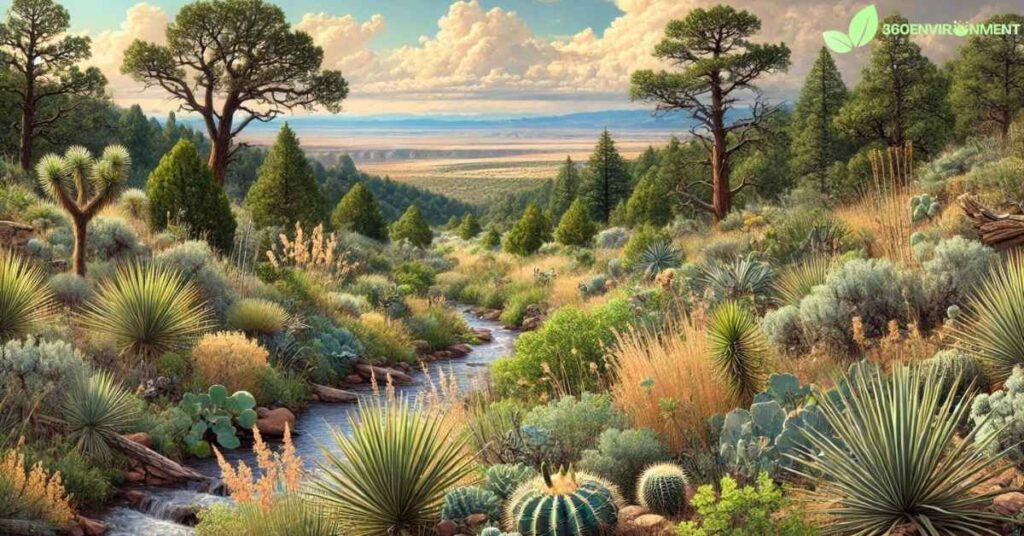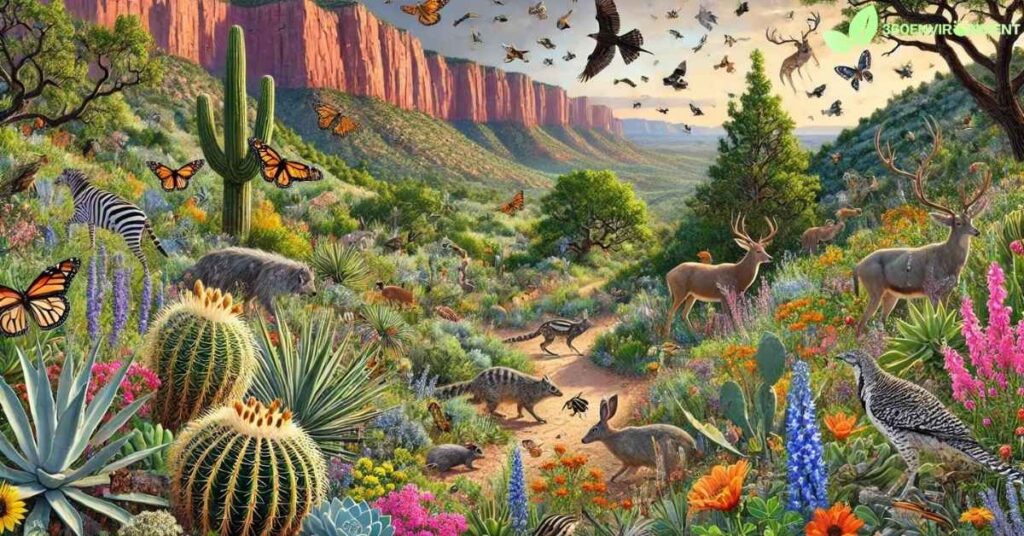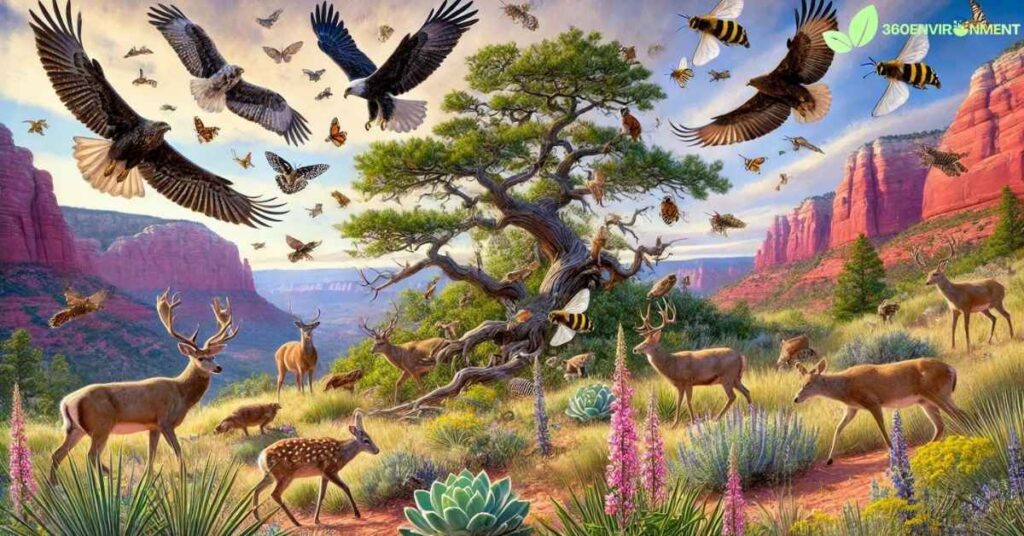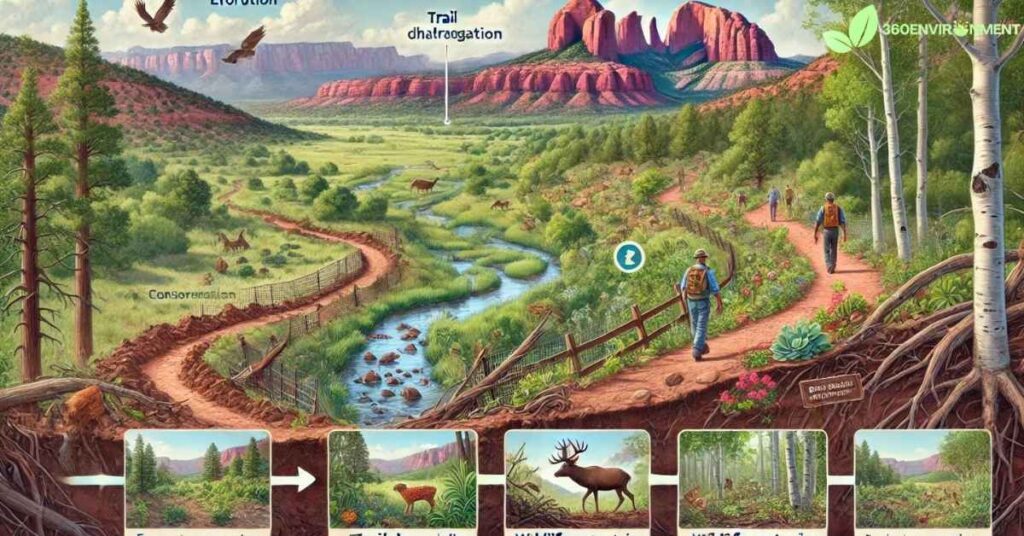Doe Mountain Trail, located in the heart of one of North America’s most captivating landscapes, offers more than just a scenic hike; it provides a window into a rich and diverse ecosystem. As hikers ascend to Doe Mountain, they encounter a wide range of habitats, species interactions, and dynamic environmental processes that define the ecological niche of this area. The trail, known for its spectacular views of red rock formations, dense forests, and desert-like terrain, is not only a popular destination for outdoor enthusiasts but also an important ecological corridor for a variety of species.
This article delves into the environmental niche of Doe Mountain Trail by exploring its unique habitats, ecosystems, biodiversity, and the ongoing conservation efforts to protect and preserve this natural area. Through an in-depth analysis of the flora, fauna, and environmental processes that occur along the trail, we can gain a better understanding of the ecological significance of this trail and why it is important to conserve.
1. Overview of Doe Mountain Trail
Doe Mountain Trail is a popular hiking destination located within the scenic red rock region of Sedona, Arizona. The trail leads hikers up a moderate ascent to the top of Doe Mountain, a flat-topped mesa that offers stunning panoramic views of the surrounding landscape. While many are drawn to the trail for its scenic beauty, the ecological significance of Doe Mountain Trail cannot be overlooked. The trail traverses a range of ecosystems, from arid desert environments to more lush, high-elevation woodlands.

1.1 Geographic Location and Terrain
Doe Mountain Trail is situated within the Coconino National Forest, a sprawling expanse of protected land that encompasses a diverse range of ecosystems, including ponderosa pine forests, high desert plateaus, and riparian corridors. The trail is approximately 2.5 miles (4 kilometers) round trip, with a moderate elevation gain of around 400 feet, making it accessible to hikers of varying skill levels.
- Red Rock Formations: The iconic red rocks that surround Doe Mountain are part of the Colorado Plateau, a geological feature that spans multiple states and includes famous landmarks such as the Grand Canyon. The striking red coloration of the rocks is due to iron oxide, which has weathered over millions of years.
- Mesa Topography: Doe Mountain itself is a mesa, meaning it has a flat top with steep sides. The flat summit of the mountain offers hikers an opportunity to explore an elevated ecosystem, complete with unique plant and animal life adapted to the high desert environment.
- Climate and Weather: The region experiences a semi-arid climate, characterized by hot, dry summers and cool, mild winters. Seasonal monsoon rains in late summer provide much-needed moisture for the region’s ecosystems, while winter snow occasionally blankets the higher elevations.
2. Habitat and Ecosystem Diversity Along Doe Mountain Trail
The ecological diversity of Doe Mountain Trail is one of its most fascinating features. As hikers ascend the trail, they pass through several distinct habitats, each supporting a unique array of plant and animal species. From arid desert scrub at the base to mixed woodland ecosystems at the summit, the trail offers a microcosm of the ecological complexity found in the greater region.

2.1 Desert Scrub Ecosystem
At the base of Doe Mountain, the trail begins in a desert scrub habitat characterized by sparse vegetation, dry soil, and intense sunlight. This arid environment is home to hardy plant species that have adapted to survive in conditions with minimal water and high temperatures.
- Cacti and Succulents: Common plant species in this region include prickly pear cactus (Opuntia spp.), agave (Agave spp.), and yucca (Yucca spp.). These plants have evolved a variety of strategies to conserve water, such as thick, waxy skins and shallow root systems that quickly absorb rainwater.
- Desert Wildlife: The desert scrub is home to a variety of small mammals, reptiles, and insects. Lizards such as the western whiptail (Aspidoscelis tigris) and the desert spiny lizard (Sceloporus magister) are common sightings along the trail. Desert cottontails (Sylvilagus audubonii) and jackrabbits (Lepus californicus) also frequent the area, foraging on sparse vegetation.
2.2 Juniper-Pinyon Woodlands
As the trail climbs in elevation, the habitat transitions into a juniper-pinyon woodland, which is characterized by a mix of small coniferous trees and hardy shrubs. This ecosystem represents a middle ground between the desert scrub and the higher-elevation forests.
- Dominant Tree Species: The two most common tree species in this habitat are the one-seed juniper (Juniperus monosperma) and the pinyon pine (Pinus edulis). Both trees are highly drought-resistant and can survive in the rocky, well-drained soils that dominate this region.
- Birdlife: The juniper-pinyon woodland provides important habitat for a variety of bird species, including the pinyon jay (Gymnorhinus cyanocephalus), scrub jays (Aphelocoma spp.), and the common raven (Corvus corax). These birds feed on seeds, insects, and small mammals, contributing to the ecological balance of the region.
- Mammals: Larger mammals such as mule deer (Odocoileus hemionus) and coyotes (Canis latrans) are often spotted in this habitat, as they roam between the desert and woodland environments in search of food and water.
2.3 Mesa-Top Woodland and Grasslands
At the summit of Doe Mountain, hikers encounter a unique mesa-top ecosystem that is both more open and cooler than the habitats below. The flat terrain of the mesa supports a mix of grasses, shrubs, and small trees, creating a mosaic of habitats that support a variety of wildlife.
- Vegetation: The mesa-top ecosystem is dominated by grasses and wildflowers in the spring and summer months. Grasses such as blue grama (Bouteloua gracilis) and needlegrass (Stipa spp.) thrive in the well-drained soils of the mesa, while shrubs like sagebrush (Artemisia spp.) and rabbitbrush (Ericameria spp.) add structure to the landscape.
- Pollinators and Insects: Insect life on the mesa is diverse, particularly during the warmer months when flowers bloom. Bees, butterflies, and beetles are common pollinators in the area, helping to maintain the reproductive success of flowering plants.
- Raptors and Predators: The open grasslands of the mesa provide ideal hunting grounds for birds of prey such as red-tailed hawks (Buteo jamaicensis) and American kestrels (Falco sparverius). These raptors hunt for small mammals and reptiles that inhabit the grasslands below.
3. Biodiversity and Species Interactions Along Doe Mountain Trail
The biodiversity found along Doe Mountain Trail is a testament to the resilience and adaptability of desert and woodland species. The various habitats found along the trail provide a home to an array of plants, animals, insects, and microorganisms, all of which interact in complex ways to maintain the ecological balance of the region.

3.1 Plant-Animal Interactions
Plant-animal interactions along the trail are crucial for the survival of many species. These interactions include herbivory, seed dispersal, and pollination, all of which help to sustain the biodiversity of the area.
- Herbivores and Plant Life: Herbivores such as mule deer and desert cottontails rely on the vegetation along the trail for food. In turn, these animals play a role in seed dispersal by consuming fruits and seeds and depositing them elsewhere through their droppings.
- Pollination: Pollinators such as bees and butterflies are essential for the reproduction of many plant species along the trail. In the spring and summer, wildflowers bloom along the trail, attracting pollinators that transfer pollen from flower to flower, facilitating fertilization.
- Seed Dispersal: Birds and small mammals are important seed dispersers in this region. Species such as the scrub jay and pinyon jay collect seeds from trees and store them in caches, some of which are forgotten and eventually germinate, helping to propagate plant life.
3.2 Predator-Prey Dynamics
The predator-prey dynamics along Doe Mountain Trail are a key component of the ecological balance in the region. Predators such as coyotes, bobcats, and birds of prey help to regulate the populations of smaller animals, preventing any one species from becoming too dominant.
- Coyotes and Small Mammals: Coyotes are one of the top predators in the area, hunting for small mammals such as rabbits, rodents, and ground squirrels. These predators play an important role in keeping herbivore populations in check, ensuring that the vegetation is not overgrazed.
- Raptors and Rodents: Birds of prey, including hawks and kestrels, are common predators of rodents and reptiles along the trail. These raptors use the elevated vantage points of the mesa and cliffs to spot and swoop down on their prey.
4. Ecological Interactions Along Doe Mountain Trail
The various species that inhabit Doe Mountain Trail engage in a wide range of ecological interactions, from competition for resources to mutualistic relationships. These interactions help to maintain the ecological health and diversity of the area.

4.1 Competition for Resources
In such a harsh environment, competition for resources such as water, food, and shelter is inevitable. Many species along Doe Mountain Trail have adapted to reduce direct competition by occupying different ecological niches.
- Water Scarcity: Water is a limited resource in the desert, and species have evolved to minimize their reliance on it. For example, some plants have deep root systems that tap into underground water sources, while animals such as the desert spiny lizard obtain moisture from their food.
- Foraging Strategies: Different species have developed specialized foraging strategies to minimize competition. For example, pinyon jays feed on the seeds of pinyon pines, while mule deer browse on shrubs and grasses, reducing direct competition for food.
4.2 Mutualistic Relationships
Mutualistic relationships, in which two species benefit from each other, are common along Doe Mountain Trail. These interactions help to ensure the survival of species and maintain the balance of the ecosystem.
- Pollination: The relationship between wildflowers and pollinators is a classic example of mutualism. Bees, butterflies, and other insects obtain nectar from the flowers, while the plants benefit from the transfer of pollen, which enables reproduction.
- Seed Dispersal: Birds and mammals that consume seeds and fruits help to disperse plant species throughout the trail. This not only benefits the plants, but it also provides food for the animals, creating a mutually beneficial relationship.
5. Conservation Challenges and Efforts
Like many natural areas, Doe Mountain Trail faces a number of conservation challenges, including habitat loss, invasive species, and the impact of human activities. However, a variety of conservation efforts are in place to protect the trail and its surrounding ecosystems.

5.1 Human Impact and Habitat Degradation
The popularity of Doe Mountain Trail has led to increased human traffic, which can have negative impacts on the environment. Trampling of vegetation, erosion of the trail, and the introduction of litter are all common problems associated with heavy use of natural areas.
- Trail Management: Efforts to manage the impact of human activity include the installation of designated trails to minimize off-trail hiking, the implementation of signage to educate visitors about the importance of staying on the path, and the regular maintenance of the trail to prevent erosion.
- Leave No Trace Principles: Public awareness campaigns encourage hikers to follow the “Leave No Trace” principles, which include packing out all trash, staying on marked trails, and respecting wildlife.
5.2 Invasive Species
Invasive plant species pose a threat to the native vegetation along Doe Mountain Trail. Non-native plants can outcompete native species for resources, leading to a decline in biodiversity and the disruption of ecological processes.
- Invasive Plant Removal: Conservation groups and volunteers regularly work to remove invasive plant species from the area. This helps to ensure that native plants have the resources they need to thrive, maintaining the ecological balance of the trail.
5.3 Climate Change
Climate change poses a long-term threat to the ecosystems of Doe Mountain Trail. Rising temperatures, changes in precipitation patterns, and increased frequency of extreme weather events could alter the plant and animal communities along the trail.
- Adaptive Conservation: Conservation efforts focus on building resilience in the ecosystem by protecting critical habitats, restoring degraded areas, and monitoring the effects of climate change on species populations.
6. Conclusion
Doe Mountain Trail is more than just a scenic hiking destination—it is a vibrant and complex ecosystem that supports a wide array of plant and animal species. From the desert scrub at its base to the juniper-pinyon woodlands and grasslands at its summit, the trail offers a unique opportunity to explore the diverse habitats of the region and observe the intricate ecological interactions that take place within them.
As human activity and climate change continue to pose challenges to the natural world, conservation efforts along Doe Mountain Trail are crucial for preserving the area’s biodiversity and ecological health. Through responsible stewardship and ongoing conservation work, we can ensure that Doe Mountain Trail remains a thriving ecosystem for generations to come.
By exploring the environmental niche of Doe Mountain Trail, we gain a deeper understanding of the ecological processes that sustain this remarkable landscape and the importance of protecting it for future generations.
Read More: Jones Creek: An Exploration of its Environmental Niche and Ecological Significance

